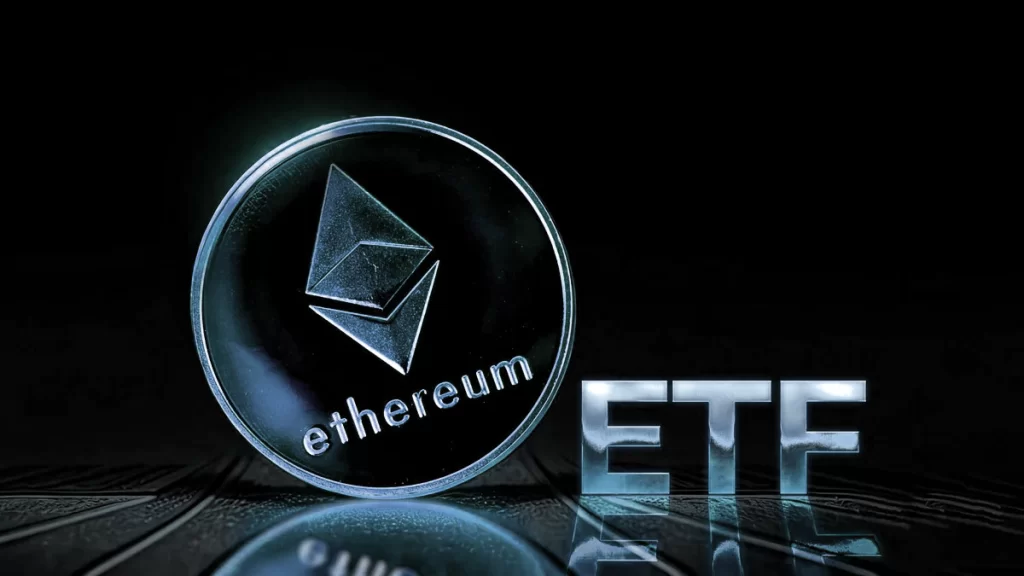After just two days of introduction, the BlackRock Ethereum ETF has over $277 million in AUM. But net outflows cause the price of ETH to drop by 8%.

The second day of the spot Ethereum ETF debut has seen a significant juggle-up. The BlackRock iShares Ether ETF got 76,669 Ethereum from Coinbase Prime in total, according to on-chain statistics. This demonstrates the market’s high level of institutional interest in BlackRock’s recently introduced Ethereum fund.
BlackRock Ethereum ETF in demand
Just two days after its debut, the BlackRock Ether ETF appears to be taking center stage. A startling $266 million was poured into BlackRock’s iShares ETF on the first day of the spot Ethereum ETF debut. On the second day, though, inflows have considerably decreased, with BlackRock just attracting $17 million in net inflows. BlackRock currently has 79,699 ETH in total.
BlackRock(iShares) Ethereum ETF wallet received 76,669 $ETH($262.4M) from #CoinbasePrime 10 hours ago.
According to #BlackRock‘s official website, #BlackRock currently holds 79,699 $ETH($277M).https://t.co/sefS6WTlHz pic.twitter.com/pvEGrWxvT9
— Lookonchain (@lookonchain) July 25, 2024
The Farside Investors data indicates that the spot Ethereum ETFs have lost favor, with a startling $133 million being pulled out on the second day of the debut. As a result, it pushes Ether ETF net flow into negative territory.
Most outflows have been attributed to the Grayscale Ethereum Trust (ETHE), which has since been turned into an ETF. The net withdrawals from the Grayscale ETHE on Wednesday, July 24, totaled $386 million, bringing the total outflows for the two days to almost $811 million. Consequently, Grayscale ETHE’s AUM has now decreased to less than $8.0 billion. Conversely, inflows into the Grayscale Ethereum mini-Trust surged to $45 million.
In the past 24 hours, #Grayscale transferred 140,044 $ETH($485.6M) to #CoinbasePrime, and received 4,382 $ETH($14.8M) from #CoinbasePrime, with a net outflow of 135,662 $ETH($470.8M)!
According to #Grayscale‘s website, #Grayscale currently holds 2,489,075 $ETH($7.9B).… pic.twitter.com/2LYaRinh4h
— Lookonchain (@lookonchain) July 25, 2024
ETH price under selling pressure
Recently, there has been intense selling pressure on Ethereum, causing the price to collapse by almost 8% and reach as low as $3,150. The approval of the Ethereum ETF turns out to have been a sell-the-news event, with investors taking their profits from the rally leading up to the ETF approval.
According to market analysts, Ethereum may see a two-week downturn before starting its ascent to a new all-time high, much like Bitcoin.
Spot Ethereum ETFs post $113M of outflows on second day of launch
The $327 million in withdrawals from Grayscale’s freshly converted Ethereum Trust was not exceeded by the “newborn” eight ETFs.

On their second trading day, spot Ether exchange-traded funds (ETFs) headquartered in the United States saw net outflows of $113.3 million, mostly as a result of significant losses from Grayscale’s Ethereum Trust.
On day two of trading, seven out of the eight Ethereum (ETH) ETFs that were considered “newborn” had net inflows. Leading the field with the biggest net inflows were the Bitwise Ethereum ETF (BITW) and the Fidelity Ethereum Fund (FETH), with contributions of $29.6 million and $74.5 million, respectively.
On July 24, investors only contributed $17.4 million to BlackRock’s iShares Ethereum Trust (ETHA), which had the strongest inflows of all the funds in the group on July 23.

Another strong day of selling from the freshly converted Grayscale Ethereum Trust (ETHE), which lost $326.9 million in outflows, pulled down the new ETFs.
When ETHE was introduced by Grayscale in 2017, institutional investors were able to buy ETH. All investments were subject to a six-month lock-up period, though. Investors may now sell their ETH more readily after it was converted to a spot Ether fund on July 22.
Just over 9% of the fund’s holdings have been sold by current investors, with $811 million in withdrawals from ETHE in the two days since its conversion.
The performance of the Ether ETF lately is not exceptional.
Six of the ten days of their debut trading session saw cumulative net outflows for spot Bitcoin (BTC) ETFs, with many attributing these to withdrawals from the Grayscale Bitcoin Trust ETF.
As of this writing, ETH is trading at $3,172, down 7.4% for the week and 6.8% during the previous 24 hours, according to TradingView statistics.
The S&P 500 closed 2.3% down on July 24 as a result of a broader sell-off in the equity market, which coincided with Ether’s declining price movement.

Notably, ETH dropped more precipitously than Bitcoin, which only dropped 2.6%. This confirms the prediction made by Kaiko analyst Will Cai that the price of ETH may be quite “sensitive” to inflows when the ETFs start.
ETHE, a spot Ether ETF from Grayscale, lost $484.4 million in its first day of trading. Nevertheless, strong inflows into the remaining eight products increased the total net inflows to $106.6 million.
Tether mints $1B on Tron with no fees
When the market capitalization of stablecoins increased, Tether created $1 billion worth of additional USDT tokens on the Tron network.

As reported by Arkham, payments company Tether created its most recent Tron USDT inventory on July 24. The company paid no transaction costs, and this is usually seen as a positive move. According to an email from a Nansen team member to crypto.news, the quantity of stablecoins in circulation has been trending significantly since June 29. This coincides with the release of the new USDT on Tron.
Wow
$1 Billion USDT mint on TRON
$0 paid in fees pic.twitter.com/2sjrQ9zdIA
— Arkham (@ArkhamIntel) July 24, 2024
Experts from the blockchain analytics company, however, stated that it’s hard to say whether this pattern portends future price rises.
“Given there were many other factors at play in October 2023, and now, it’s hard to justify it being the next leg up on its own.” the Nansen analyst explained.
Other things to think about, according to Nansen, include address statistics, exchange-traded fund flows, macro outlooks, and monetary policies, as well as on-chain decentralized exchange volumes.
Despite the fact that the market value for stablecoins topped $160 million after months of stasis, current patterns indicate that the cryptocurrency market still has a ways to go before technical watchers are confident greater prices are certainly arriving.
The particular stablecoins that are increasing circulation also shown the evolution of consumer demand. Circle’s USDC, Tether’s USDT, Maker’s DAI, Paxos’ PYUSD, and USDD were all mentioned in the Nansen data.
It looks like it’s not only a big day for ETH…but also for stablecoins!
The total stablecoin market cap has finally started to break $160b after 3 months of remaining relatively flat, highlighting increasing demand and growing confidence in these assets
Bullish. pic.twitter.com/Zv8qe6RTJ7
— Nansen 🧭 (@nansen_ai) July 23, 2024


